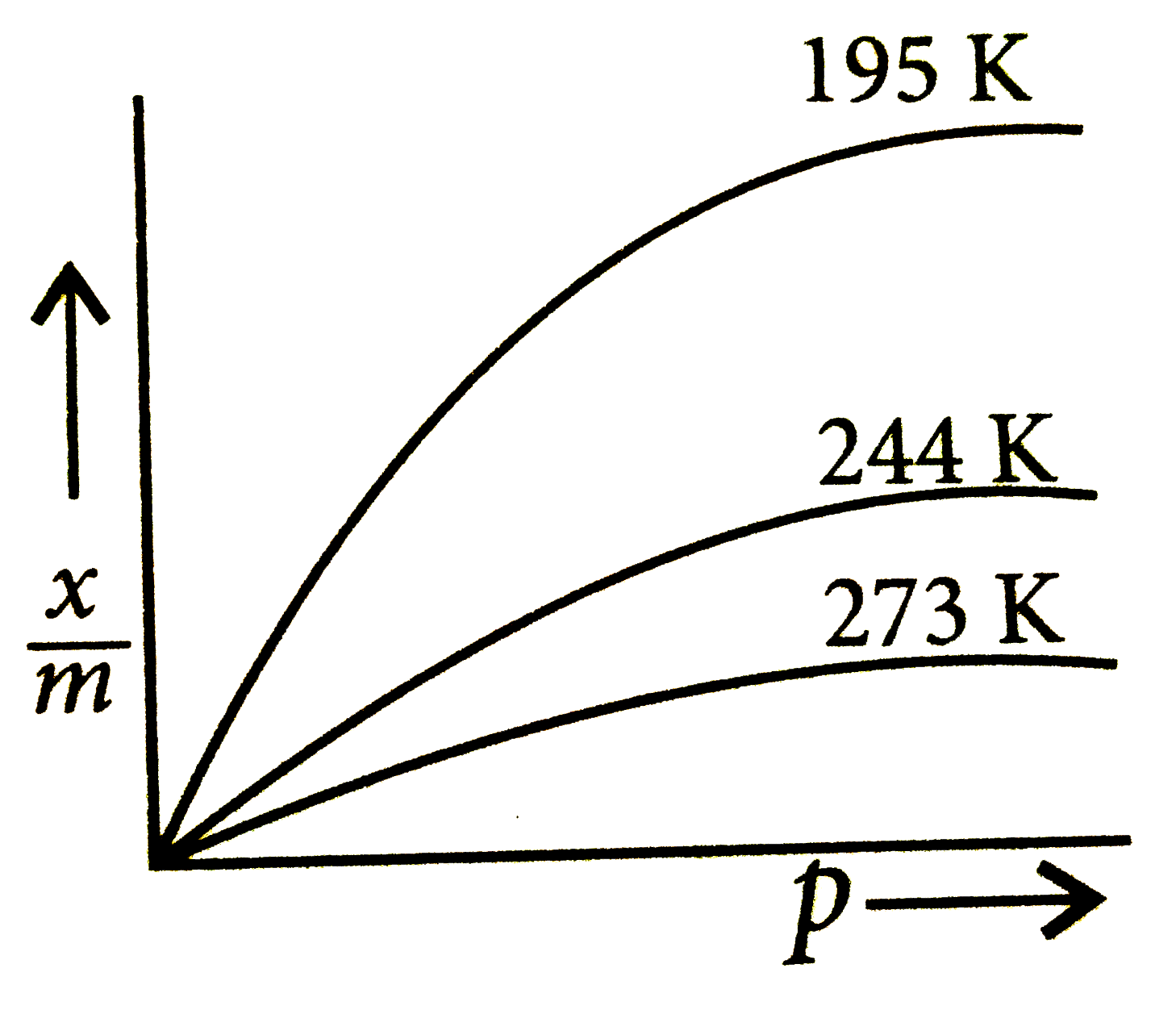Explain the following observations.
a. Sun looks red at the time of sunset.
b. Rate of physical adsorption decreases with rise in temperature.
At the time of sunset, the sun is at horizontal. The light emitted by the sun has to travel a relatively longer distance through the atmosphere. As a result, blue part of light is scattered away by the particulate in the atmosphere causing red part to be visible.
b. Gas (adsorbate)+Solid (adsorbent)
Condensation⇐=====⇒Evaporation Gas adsorbed on solid + Heat Physical adsoption in an exothermic process. At equilibrium as temperature is increased, by Le-Chaterlier's principle, the equilibrium shifts in the backward direction, i.e., adsorption decreases.
c. Physical adsorption involves van der Waals forces, so any number of layers may be formed one over the other on the surface of the adsorbent. Chemical adsorption takes place as a result of the reaction between adsorbent and adsorption adsorbate. When the surface of adsorbent is covered with one layer, no further reaction can take place.
Topper's Solved these Questions
- BOOK - CENGAGE CHEMISTRY ENGLISHCHAPTER - SURFACE CHEMISTRYEXERCISE - Illustration 5.361videos
SURFACE CHEMISTRY
- BOOK - CENGAGE CHEMISTRY ENGLISHCHAPTER - SURFACE CHEMISTRYEXERCISE - Solved Examples20videos
SURFACE CHEMISTRY
- BOOK - CENGAGE CHEMISTRY ENGLISHCHAPTER - SOLUTIONSEXERCISE - Ex 2.3 (Objective)9videos
SOLUTIONS
- BOOK - CENGAGE CHEMISTRY ENGLISHCHAPTER - SYNTHETIC AND NATURAL POLYMERSEXERCISE - Exercises Assertion Reasoning10videos
SYNTHETIC AND NATURAL POLYMERS
Similar Questions
Following is the variation of physical adsorption with temperature.
View SolutionWhich of the following statements is not true?
a. Both physisorption and chemisorption are exothermic.
b. Physisorption occurs with increase of free energy.
c. Physisorption requires low activation energy but chemisorption requires high activation energy.
d. The magnitude of chemisorption increases and that of physisorption decreases with rise in temperature.View Solution
Knowledge Check
- Question 1 - Select One
Which of the following does not decrease with rise in temperature ?
ADensityBSurface tensionCVapour pressureDViscosity
Explain graphically how the rate of a reaction changes with every 10∘C rise in temperature.
View SolutionDerive the variation of x/m versus temperature for physical adsorption process. Explain the nature of the curve.
View SolutionComment on the following statements.
(a) Evaporation produces cooling.
(b) Rate of evaporation of an aqueous solution decreases with increase in humidity .
(c) Sponge though compressible is a solid.View SolutionExplain the following observations :
(i) Nitrogen is much less reactive than phosphorus.
(ii) Despite having greater polarity, hydrogen fluoride boils at a lower temperature than water.View SolutionObserve the given adsorption isotherm carefully and choose the correct option

(i) These curves indicates that at a fixed temperature, there is a decrease in physical adsorption with increase in pressure.
(ii) These curves always seem to approach saturation at high pressure.
xm=k⋅p1/n(n>1) is generally represented by this isotherm.
(iv) These curves indicate that at a fixed pressure, there is a decrease in physcial adsorption with increase in temperature .View Solution(a) Explain the following terms :
(i) Order of a reaction
(ii) Molecularity of a reaction
(b) The rate of a reaction increases four times when the temperature changes from 300 K to 320 K. Calculate the energy of activation of the reaction, assuming that it does not change with temperature. (R=8.314JK−1mol−1)View SolutionExplain the following observations:
(a) Azide ion (N3) react with 2− bromopentane thousand times faster than with neopentyl bromide in a SN2 reaction through former is a secondary halide while latter is primary.
(b) What will happen to the stereochemistry of product of the following reaction:

(c) What will happens to the rate if the concentration of alkyl bromide in (b) is doubled?
(d) Wha will happen to the rate if the concentration of azide ion in (b) is doubled?
(e) How the sign of optical rotation of reactant and product are related in (b)
(f) When allowed to stand in dilute H2SO4 laevo-rotatory 2-butanol slowly loss optical activity.View Solution

